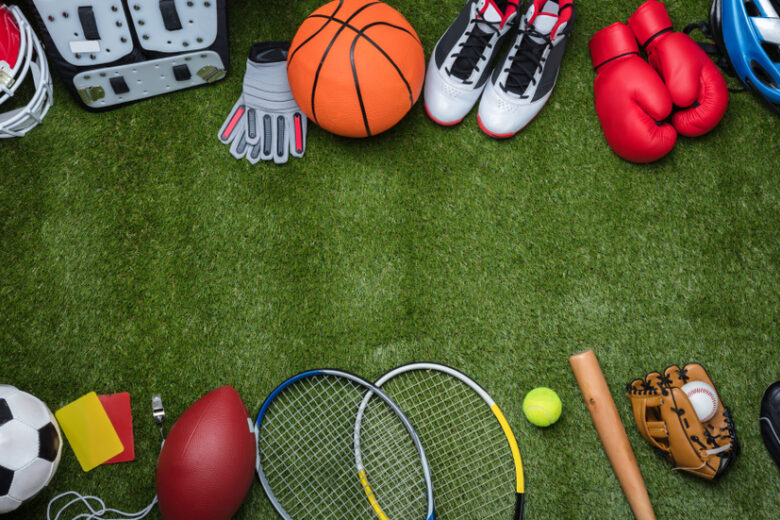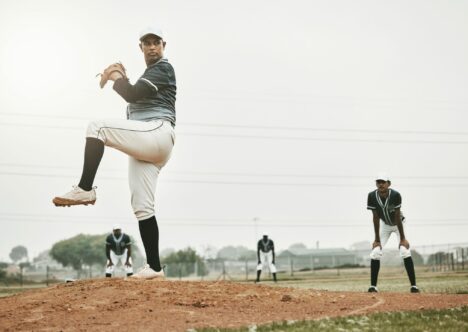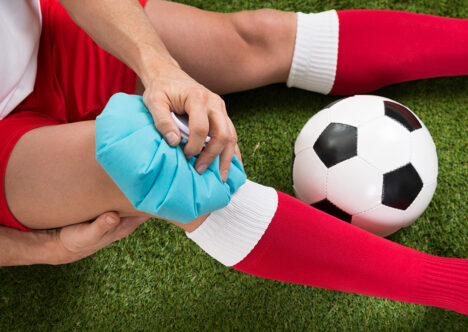Use our convenient online scheduler to book an appointment now.

Overuse Injury: What is an Overuse Injury and How Does it Happen?
Athletes of all ages play sports for the love of the games. But no one wants a sports injury. An overuse injury is common among athletes where bones, muscles, ligaments, or tendons get injured from repetitive stress. Learning about overuse injuries can help prevent them.
An overuse injury can happen in many ways:
- Improper training: Training errors can happen by doing a lot of physical activity too quickly. With little recovery, this can put too much stress on the body.
- Improper technique: Performing techniques wrong can put stress on joints. Whether it’s lifting, performing drills, or playing a game, if an athlete uses improper techniques, overuse injuries can happen.
- Growing bones and growth spurts: Younger athletes’ bodies are still growing. As bones lengthen and grow, they become susceptible to injury.
- Playing only one sport: Athletes only focusing on one sport train their muscles for that game. This neglects other body parts and adds too much stress without enough rest for the parts that are being used, causing injury.
- Advancing too quickly in physical activity: If an athlete begins playing a sport, and the intensity level increases fast, they may injure themselves because their body is not accustomed to the physical demands.
- Not prioritizing recovery: Athletes need recovery. The body is not a machine; it needs breaks and rest. If athletes push too hard without a break, they may get injured.
If athletes do not adequately train and take care of their bodies, they can fall victim to overuse injuries.
Common Overuse Injuries
Overuse injuries commonly occur in the elbows, shoulders, knees, and heels. The most common types are:

- Runner’s knee: This knee overuse injury is the most common overuse injury in runners, affecting 30% of female runners and 25% of male runners. Symptoms of runner’s knee include a dull, aching pain around or behind the knee cap and occasional popping or giving way.
- Achilles tendinitis: An overuse ankle injury common in runners where the Achilles tendon becomes irritated and swollen. Symptoms include pain and stiffness in the heel when walking, running, or touching the back of the heel.
- Strained muscle: This happens by overstretching or tearing a muscle. A strained muscle is associated with pain, swelling, spasms, and movement limitations, commonly in the lower back, neck, shoulder, or hamstring.
- Plantar fasciitis: Prevalent in runners, this is a common foot injury causing pain in the heel that just about any athlete can experience, generally felt by a stabbing sensation at the bottom of the foot.
- Shin splints: This overuse injury is associated with pain along the inner part of the shin bone. They usually occur in runners or when there is a significant increase or change in training regimens. Symptoms include tenderness, soreness, and rarely swelling in the lower leg.
- Rotator cuff tendinitis: This shoulder overuse injury makes it difficult to move your arm. It is accompanied by pain, swelling, a clicking noise, stiffness, and loss of mobility.
- Tennis/golfer’s elbow: Though not limited to golfers and tennis players, this injury occurs with pain in the forearm muscle tendons where they insert on your elbow. Symptoms include pain, tenderness, stiffness, weakness, and occasionally numbness or tingling.
- Stress fracture: A stress fracture is a small crack in a bone from repetitive impacts, such as from running or jumping. A stress fracture has pain and tenderness in the affected area, pain beginning in activity but going away with rest, or pain during rest or everyday activities.
Though an overuse injury can happen to any athlete at any time, an athlete can take precautions to limit the chance of an injury.
How to Prevent Overuse Injuries
Athletes can prevent overuse injuries by properly training and taking care of their bodies. Ways to prevent the injuries include:
- Properly warming up: Engaging in warm-ups that begin slowly and increase intensity will help gradually increase an athlete’s heart and prepare the body for strenuous activity.
- Properly cooling down: Engaging in low-impact, active recovery can help keep the muscles limber, decrease the heart rate, and ease the body into rest.
- Hydration: Staying hydrated can reduce fatigue and lower injury rates.
- Cross training: Training in other sports or workouts allows the body to develop strength in multiple areas. Athletes should avoid sports specialization, especially at young ages.
- Rest: Resting allows the body to recover. If an athlete overtrains, they risk an increase in an overuse injury.
Understanding the importance of preventative measures can keep an athlete’s time on the field, court, or mat—and off the sideline.
Seeking Overuse Injury Treatment at Town Center Orthopaedics
No athlete wants to watch their teammates play while injured. If you are an athlete experiencing an overuse injury or you want to get on a prevention plan, the Sports Medicine specialists at Town Center Orthopaedics can help. Request an appointment today!
Join our Mailing List
TCO provides patients with orthopedic problems the trusted resources and patient-centered advice they need to “Feel Better. Move Better. Be Better.”
© 2024 Town Center Orthopaedics | All Rights Reserved


